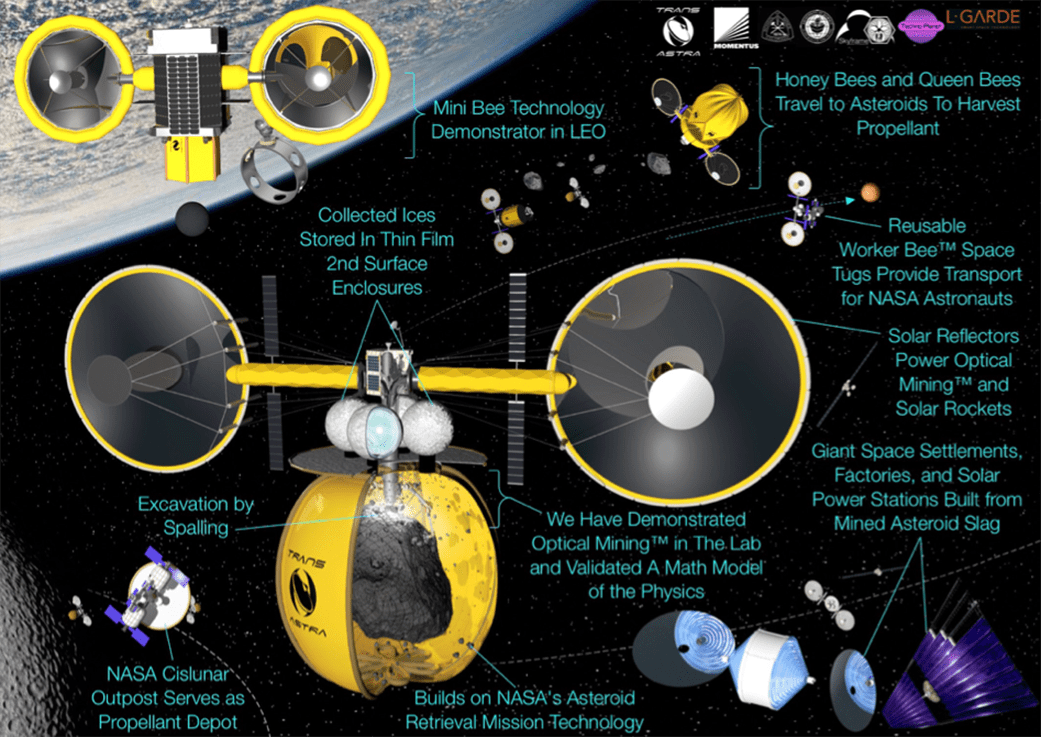Joel Sercel
TransAstra Corporation
Apis™ is a breakthrough mission and flight system architecture designed to revolutionize NASA’s human exploration of deep space and to enable massive space industrialization and human settlement. Apis™ is enabled by Public Private Partnership (PPP) and a series of inventions including the Optical Mining™ method of asteroid resource harvesting, the Omnivore™ solar thermal thruster, and a spacecraft architecture that uses highly concentrated sunlight as a far lighter, less expensive, and higher performing alternative to electric power in space. Mission and business analysis funded by a combination of private, NIAC, Emerging Space, and SBIR sources projects >$300B in savings for NASA HEOMD while enabling affordable cislunar tourism and space industries.
In prior work we have elevated the TRL of the Apis architecture and roadmap from level 1-2 to level 3-4 by completing:
- Detailed design, fabrication, assembly, and test of the Optical Mining Test Bed (OMTB), a fully integrated test bed for systematic experimentation for the maturation of Optical Mining technology,
- Operation of the OMTB targeting various test materials including heat resistant bricks and CI type asteroid simulants.
- Higher fidelity design and analysis of all roadmap spacecraft and missions including the Mini Bee™ LEO technology demonstrator, Honey Bee 100 MT return system, and Queen Bee “ultimate”,
- Higher fidelity asteroid resource exploration mapping based on a synthetic population of asteroids derived from the Granvik model co-authored by our Co-I Robert Jedicke in Nature with the update results submitted for publication in Icarus.
Work to be Performed:
- Road Mapping and Mission Analysis
- Round trip mission designs based on latest modeling results
- More Detailed Apis™ mission roadmap
- Conceptual design of robotic systems to assist in manipulating asteroids during resource extraction
- Technology Maturation and Demonstration
- Experimental exploration in OMTB to improve physics models of optical mining
- End to End modeling/simulation of rarified gas dynamics, granular material flow and filter design for resource separation and capture during extraction
- Demonstration of a solar thermal Omnivore™ thruster with sapphire window and advanced ceramic components
- Develop Mini Bee™ Flight Prototype
- Mini Bee™ inflatable Solar Reflector fabrication, facility installation and deployment, and optical performance measurements
- Integration of the STR thruster with the optical reflector and overall integration of the propellant feed system for both the STR and water based resistojet RCS provided by our partner Momentus Space.
On completion of this Phase 3, TransAstra will be in position to successfully propose Mini Bee™ to a NASA Mid-TRL program such as Tipping Points and other elements of the Apis architecture to programs such as the STMD Game Changing technology program.



























